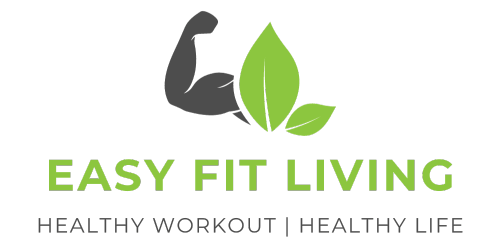In this ultimate guide, you will discover the secrets to effectively using workout accessories for rehabilitation and injury prevention. Whether you’re recovering from an injury or simply looking to prevent future ones, this guide will equip you with the knowledge and tools you need to optimize your workouts and protect your body. From foam rollers to resistance bands and everything in between, we’ll explore how each accessory can enhance your fitness routine and help you reach your goals. Get ready to take your rehab and injury prevention game to the next level with this comprehensive guide.

The Importance of Workout Accessories
When it comes to maximizing your workout performance and ensuring your safety, incorporating workout accessories into your routine should be a top priority. These accessories not only aid in injury prevention but also promote rehabilitation, allowing you to recover faster and get back to your fitness goals. By investing in the right workout accessories, you can enhance your overall fitness experience and achieve better results.
Enhancing Performance and Safety
Workout accessories are designed to enhance your performance by providing added support, stability, and resistance. For example, ankle and wrist weights can help strengthen your muscles and joints, making your workouts more challenging and effective. Similarly, resistance bands offer variable resistance levels, allowing you to target specific muscle groups and progress in your strength training routine. By incorporating these accessories into your workouts, you can take your fitness to the next level while minimizing the risk of injuries.
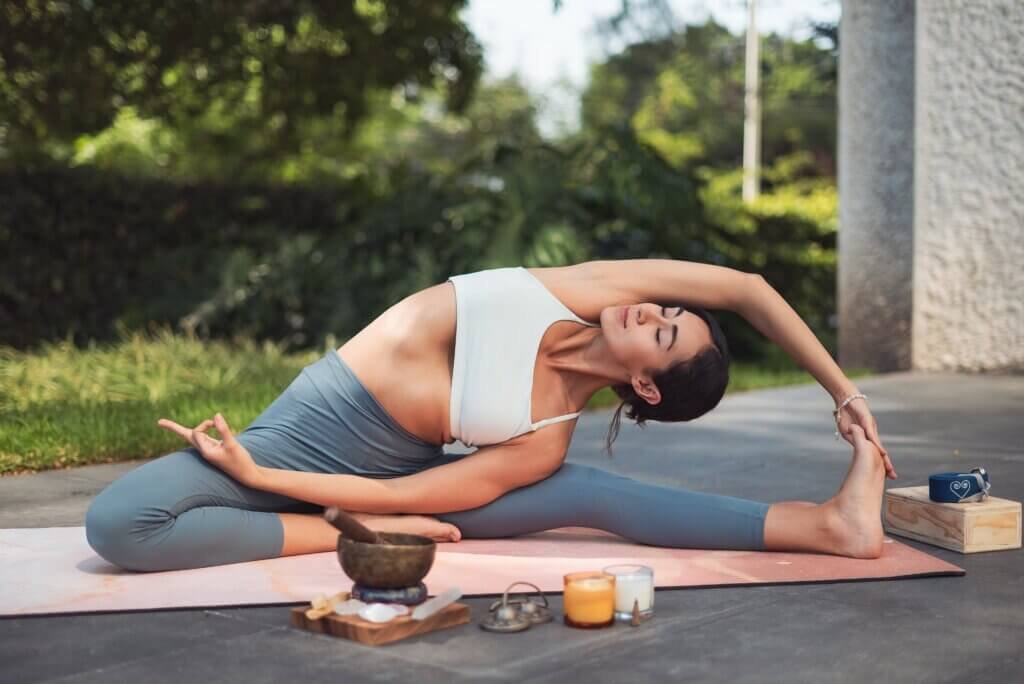
Aiding in Injury Prevention
One of the key benefits of workout accessories is their ability to prevent injuries. Knee sleeves and wraps provide support and stabilization to the knee joint, which is particularly important in high-impact activities such as running or weightlifting. By wearing knee sleeves or wraps, you can reduce the risk of knee injuries and ensure a safer workout experience.
Compression clothing is another essential accessory for injury prevention. The compression technology increases blood flow and reduces muscle fatigue, decreasing the chances of strains or sprains during exercise. Whether you’re recovering from an injury or looking to stay injury-free, incorporating compression clothing into your routine can make a significant difference in your overall fitness journey.
Promoting Rehabilitation
In addition to injury prevention, workout accessories also play a crucial role in rehabilitation. Whether you’re recovering from a sports-related injury or trying to rehabilitate a specific muscle group, certain accessories can aid in your recovery process. For instance, foam rollers are effective tools for myofascial release, which helps alleviate muscle tightness and restore range of motion. By incorporating foam rolling into your pre-workout routine or using it for targeted exercises, you can promote faster recovery and prevent future injuries.
Massage balls are another must-have accessory for rehabilitation. These compact tools allow you to target specific muscle groups and provide deep tissue massage. By using massage balls, you can improve muscle flexibility, relieve muscle soreness, and speed up the healing process. Incorporating massage balls into your active recovery routine can make a world of difference in your rehabilitation journey.
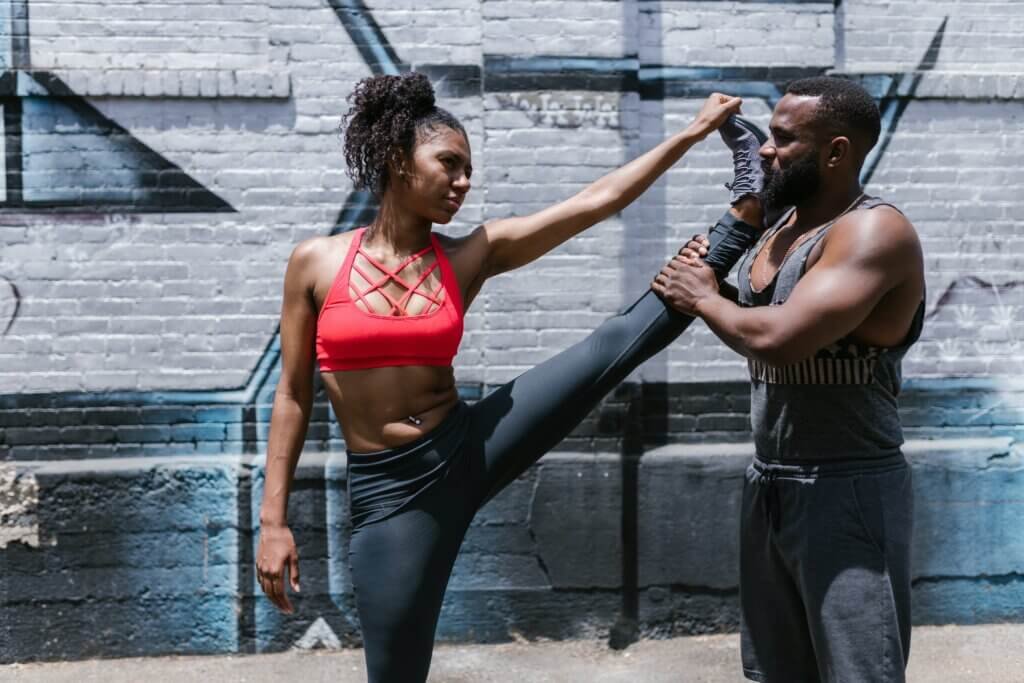
Common Workout Accessories for Rehabilitation and Injury Prevention
Now that we understand the importance of workout accessories for enhancing performance, safety, and rehabilitation, let’s explore some of the most common accessories you should consider incorporating into your fitness routine.
Resistance Bands
Resistance bands are versatile tools that offer a variety of resistance levels to target different muscle groups. These bands can be used for strength training, flexibility exercises, and even cardiovascular workouts. By incorporating resistance bands into your routine, you can effectively strengthen your muscles, improve your range of motion, and prevent injuries.
Foam Rollers
Foam rollers are cylinder-shaped accessories that help alleviate muscle tightness and trigger points through self-myofascial release. By rolling specific muscle groups on the foam roller, you can relieve muscle tension and improve your overall mobility. Foam rollers are especially beneficial for rehabilitation and injury prevention, as they can be used to target specific problem areas and promote faster recovery.
Massage Balls
Massage balls are small, portable tools that provide deep tissue massage. These balls can be used to target specific muscle groups, relieve muscle soreness, and improve range of motion. Whether you’re recovering from an injury or simply looking to prevent muscle tightness, incorporating massage balls into your routine can greatly enhance your rehabilitation and injury prevention efforts.
Balance Boards
Balance boards are excellent accessories for improving balance, stability, and proprioception. By standing or performing exercises on a balance board, you engage your core muscles and challenge your balance, which helps improve coordination and prevent injuries. Balance boards are particularly useful for rehabilitation, as they can be used to regain stability and strength in injured joints or muscles.
Ankle and Wrist Weights
Ankle and wrist weights are accessories that add resistance to your workouts, helping to strengthen your muscles and joints. These weights can be used during a wide range of exercises, including walking, running, and strength training. By incorporating ankle and wrist weights into your routine, you can increase the intensity of your workouts and enhance your overall fitness results.
Knee Sleeves and Wraps
Knee sleeves and wraps provide support and stabilization to the knee joint, reducing the risk of injuries and promoting faster recovery. These accessories are particularly important for individuals engaged in high-impact activities such as running or weightlifting. By wearing knee sleeves or wraps, you can protect your knees, prevent strains or sprains, and maximize your performance.
Compression Clothing
Compression clothing, such as compression sleeves, shorts, or tops, applies gentle pressure to your muscles, improving blood flow and reducing muscle fatigue. This technology not only enhances your performance but also aids in injury prevention and rehabilitation. Whether you’re recovering from an injury or looking to prevent muscle soreness, incorporating compression clothing into your routine can significantly enhance your overall fitness experience.
Grip Strengtheners
Grip strengtheners are accessories designed to improve hand and forearm strength. These tools are particularly useful for individuals involved in activities that require a strong grip, such as weightlifting or rock climbing. By incorporating grip strengtheners into your routine, you can improve your grip strength and prevent injuries associated with weak hand muscles.
Hearing Protection
While workout accessories often focus on physical aspects, it’s important not to overlook the importance of hearing protection. If you regularly engage in activities that produce loud noises, such as weightlifting or using exercise equipment, wearing hearing protection is crucial. By protecting your ears from excessive noise, you can prevent hearing damage and ensure your long-term well-being.
Weightlifting Belts
Weightlifting belts are accessories specifically designed to provide support and stability to your lower back while lifting heavy weights. These belts can reduce the risk of back injuries and promote proper form during weightlifting exercises. Whether you’re a professional weightlifter or a beginner, using a weightlifting belt can significantly enhance your safety and performance.
How to Properly Use Resistance Bands in Rehabilitation and Injury Prevention
Resistance bands are an excellent tool for rehabilitation and injury prevention, as they offer variable resistance levels and can target specific muscle groups. To make the most of resistance bands in your fitness routine, follow these guidelines:
Choosing the Right Band
Resistance bands come in various resistance levels, ranging from light to heavy. When selecting a band, consider your current fitness level and the specific muscle groups you want to target. If you’re new to resistance training, start with a lighter band and gradually increase the resistance as you build strength.
Dynamic Warm-Up with Resistance Bands
Before starting your workout, it’s important to warm up your muscles. Resistance bands can be used for dynamic warm-up exercises that activate and prepare your muscles for the upcoming workout. Perform exercises such as leg swings, arm circles, or lateral walks using the resistance band to warm up and stretch your muscles.
Targeting Specific Muscles and Joints
One of the main benefits of resistance bands is their versatility in targeting specific muscle groups and joints. By adjusting the positioning of the band and varying the angles, you can effectively engage different muscle groups and enhance their strength and flexibility. For example, you can use the band to target your glutes, hips, or shoulders, depending on your personal fitness goals.
Progressive Resistance Training
To continuously challenge your muscles and promote strength gains, it’s important to incorporate progressive resistance training with resistance bands. Start with a lighter resistance band and gradually increase the resistance as your muscles adapt to the exercises. This gradual increase in resistance will ensure continual progress and prevent plateauing in your workouts.
Incorporating Bands into Cardiovascular Exercises
Resistance bands can also be incorporated into cardiovascular exercises, such as running or cycling, to add an extra challenge and intensity to your workout. For example, you can wrap the band around your thighs during a squat jump or perform resistance band sprints to increase the difficulty of your cardio routine. By incorporating bands into your cardiovascular exercises, you can improve both your strength and endurance.
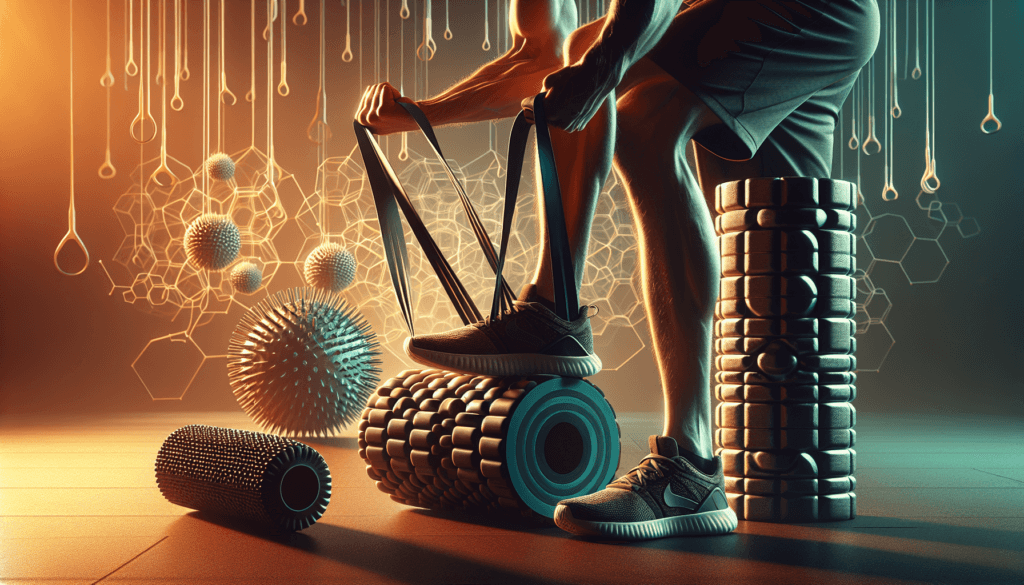
Utilizing Foam Rollers for Rehabilitation and Injury Prevention
Foam rollers are an essential accessory for rehabilitation and injury prevention, as they help alleviate muscle tightness and promote faster recovery. Here’s how you can utilize foam rollers in your fitness routine:
Understanding Foam Roller Benefits
Foam rollers provide self-myofascial release, which is a technique that involves applying pressure to tight or knotted muscles to release tension. By using a foam roller, you can target specific muscle groups and alleviate muscle tightness, improving your overall mobility and flexibility. Foam rolling also increases blood flow to the muscles, promoting faster recovery and reducing muscle soreness.
Targeting Muscle Tightness and Trigger Points
Foam rollers are particularly effective in targeting muscle tightness and trigger points, which are specific areas of tension or knots within the muscle. By rolling the foam roller over these problem areas, you can directly apply pressure and release the muscle tension. Target common tight areas such as calves, quadriceps, hamstrings, and the upper back to alleviate muscle tightness effectively.
Using Foam Rollers for Myofascial Release
Foam rolling is a form of self-massage that aims to release myofascial restrictions in the muscles and surrounding tissues. To perform myofascial release with a foam roller, simply place the roller on the floor and position the targeted muscle group on top of it. Use your body weight to apply pressure and roll back and forth, focusing on areas of tension or discomfort. Spend about 30 seconds to two minutes on each muscle group, adjusting the pressure and intensity according to your comfort level.
Incorporating Foam Rollers into Pre-Workout Routine
Foam rolling can also be used as a pre-workout warm-up routine to prepare your muscles for exercise. By rolling specific muscle groups before your workout, you can increase blood flow, improve mobility, and enhance overall performance. Spend a few minutes foam rolling the major muscle groups you’ll be engaging during your workout to maximize the benefits.
Rehabilitation Exercises with Foam Rollers
Foam rollers are an effective tool for rehabilitation, as they can be used in targeted exercises to regain strength and mobility in injured muscles or joints. Talk to a physical therapist or fitness professional to learn specific foam roller exercises that can assist in your rehabilitation journey. These exercises can help you regain stability, improve range of motion, and prevent further injuries.
The Benefits of Massage Balls in Rehabilitation and Injury Prevention
Massage balls are compact tools that offer deep tissue massage, making them highly beneficial for rehabilitation and injury prevention. Let’s explore the various benefits of incorporating massage balls into your fitness routine:
Deep Tissue Massage in a Compact Form
Massage balls are designed to provide deep tissue massage in a compact and portable form. These balls are typically small and made of dense material, allowing you to apply targeted pressure to specific muscle groups. By utilizing massage balls, you can effectively release muscle tension and alleviate tightness, promoting faster recovery and preventing injuries.
Targeting Specific Muscle Groups
Massage balls are versatile tools that can be used to target specific muscle groups, depending on your individual needs and goals. By placing the massage ball between your body and a hard surface, such as the floor or a wall, you can apply pressure to the desired muscle group and roll the ball to massage the area. Target areas such as the glutes, calves, or shoulders to alleviate muscle soreness and improve flexibility.
Improving Range of Motion and Flexibility
By incorporating massage balls into your fitness routine, you can improve your range of motion and flexibility. Massage balls help release muscle tension and adhesions, allowing your muscles to move more freely. Regular use of massage balls can enhance your flexibility, making your workouts more effective and reducing the risk of injuries.
Massage Ball Techniques for Rehabilitation
Massage balls are particularly useful for rehabilitation, as they can be used in targeted exercises to promote recovery and strengthen injured muscles or joints. Talk to a physical therapist or fitness professional to learn specific massage ball techniques that can assist in your rehabilitation journey. These techniques can help increase blood flow, reduce muscle tightness, and enhance overall healing.
Using Massage Balls for Active Recovery
In addition to their rehabilitative benefits, massage balls can also be used for active recovery. Active recovery refers to low-intensity exercises or techniques performed after a workout to help the body recover faster. By using massage balls during active recovery, you can effectively reduce muscle soreness, improve circulation, and expedite the recovery process.
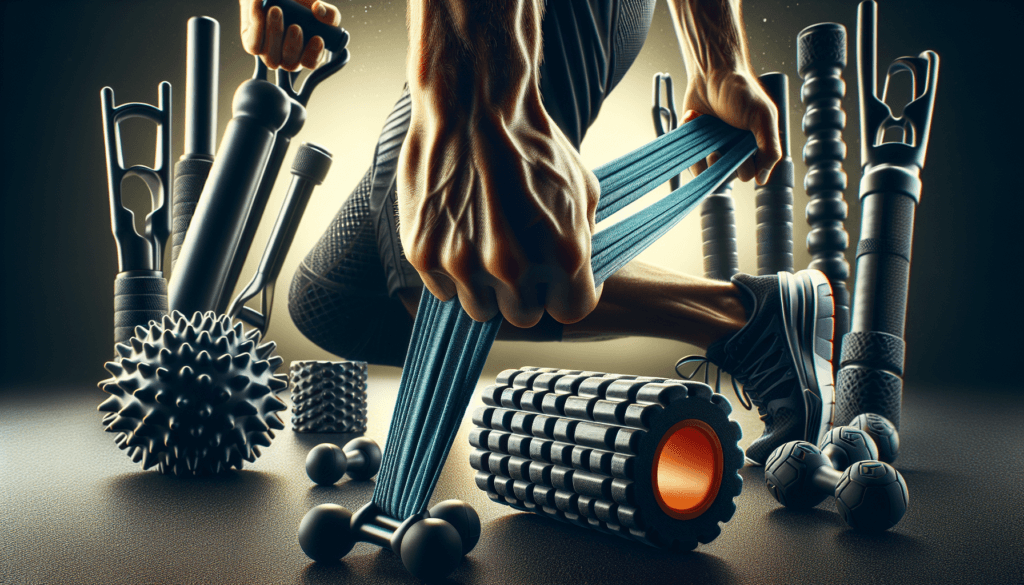
Enhancing Balance and Stability with Balance Boards
Balance boards are excellent accessories for enhancing balance, stability, and proprioception. By incorporating balance boards into your fitness routine, you can improve your overall coordination and prevent injuries. Here’s how balance boards can benefit your workouts:
Improving Proprioception and Body Awareness
Proprioception refers to your body’s ability to sense its position, movement, and orientation. By training proprioception, you can enhance your body awareness and balance. Balance boards provide an unstable surface that challenges your body to maintain stability and equilibrium. By incorporating balance board exercises into your routine, you can improve your proprioception and body control, making you less prone to injuries.
Rehabilitation Exercises on Balance Boards
Balance boards are particularly useful for rehabilitation, as they can be used to regain stability and strength in injured joints or muscles. For example, individuals recovering from ankle sprains can benefit from balance board exercises that promote ankle stability. Talk to a physical therapist or fitness professional to learn specific rehabilitation exercises on the balance board that can assist in your recovery.
Injury Prevention Training with Balance Boards
Regularly incorporating balance board training into your fitness routine can greatly reduce the risk of injuries. By challenging your balance and stability, you strengthen the muscles and joints responsible for maintaining proper alignment during movements. This increased stability and strength help prevent falls and injuries in everyday activities and sports.
Advanced Balance Board Movements
Once you’ve mastered the basic balance board exercises, you can progress to more advanced movements to further challenge your balance and stability. Advanced balance board exercises often involve dynamic movements, such as jump squats or single-leg raises, that require greater coordination and body control. These advanced movements can help improve your athletic performance and take your balance training to the next level.
Strengthening Muscles and Joints with Ankle and Wrist Weights
Ankle and wrist weights are excellent accessories for strengthening muscles and joints, making your workouts more challenging and effective. Here’s how you can make the most of ankle and wrist weights in your fitness routine:
Benefits of Ankle and Wrist Weights
Ankle and wrist weights provide added resistance to your workouts, which helps increase muscle strength and endurance. By wearing these weights during exercises, such as walking, running, or strength training, you can target specific muscle groups and make your workouts more challenging. Ankle and wrist weights are particularly beneficial for individuals looking to strengthen their lower body or upper body muscles.
Incorporating Weights into Rehabilitation Exercises
Ankle and wrist weights can be effectively used in rehabilitation exercises to strengthen injured muscles or joints. By gradually adding weights to your exercises, you can enhance the intensity and promote faster recovery. Talk to a physical therapist or fitness professional to learn specific exercises that incorporate ankle and wrist weights for your rehabilitation needs.
Resistance Training for Injury Prevention
Regular resistance training with ankle and wrist weights can significantly reduce the risk of injuries. By strengthening the muscles and joints, you improve your body’s ability to withstand external forces and maintain proper alignment during movements. Incorporate ankle and wrist weights into your resistance training routine to enhance your overall strength and reduce the risk of muscle imbalances or weakness.
Proper Weight Selection and Safety Tips
When using ankle and wrist weights, it’s important to select an appropriate weight that matches your fitness level and goals. Start with lighter weights and gradually increase the resistance as your muscles adapt and strengthen. Avoid using weights that are too heavy, as they can strain your muscles or joints. Additionally, always follow proper safety guidelines when using ankle and wrist weights, such as maintaining proper form and avoiding sudden or jerky movements that may cause injury.
Support and Stabilize with Knee Sleeves and Wraps
Knee sleeves and wraps are essential accessories for individuals involved in high-impact activities such as running or weightlifting. These accessories provide support and stabilization to the knee joint, reducing the risk of injuries and promoting faster recovery. Here’s how knee sleeves and wraps can benefit your fitness routine:
Benefits of Knee Sleeves and Wraps
Knee sleeves and wraps offer various benefits, including improved stability, compression, and support to the knee joint. They provide a snug fit around the knee, keeping it aligned and reducing excessive movements that can lead to injuries. Additionally, knee sleeves and wraps can help retain warmth and increase blood flow to the area, promoting faster recovery and reducing muscle soreness.
Choosing the Right Knee Support
When it comes to choosing knee sleeves or wraps, it’s crucial to select the right support for your needs. Knee sleeves are typically made of neoprene material and provide compression and stability to the knee joint. They are suitable for individuals looking for general support and pain relief. On the other hand, knee wraps are made of elastic material and provide more customizable support. They are often used by weightlifters or individuals requiring extra stability during heavy lifts.
Using Knee Sleeves and Wraps During Rehabilitation
Knee sleeves and wraps can be effectively used during rehabilitation to provide support and stability to the knee joint. Whether you’re recovering from a knee injury or trying to strengthen the muscles around the knee, incorporating knee sleeves or wraps can promote faster recovery and prevent further injuries. It’s essential to consult with a physical therapist or fitness professional to determine the appropriate support and exercises for your specific rehabilitation needs.
Preventing Knee Injuries in High-Impact Activities
For individuals engaged in high-impact activities such as running, jumping, or weightlifting, knee injuries are a common concern. Knee sleeves and wraps can significantly reduce the risk of these injuries by providing added support and stabilization to the knee joint. By wearing knee sleeves or wraps during your workouts, you can protect your knees and reduce the chances of strains, sprains, or other knee-related injuries.
The Role of Compression Clothing in Rehabilitation and Injury Prevention
Compression clothing plays a crucial role in rehabilitation and injury prevention by providing support, improving blood flow, and reducing muscle fatigue. Here’s how compression clothing can enhance your fitness routine:
Understanding Compression Technology
Compression clothing works by applying gentle pressure to specific areas of your body, typically the muscles and limbs. This pressure helps increase blood circulation, improve oxygen delivery to the muscles, and enhance waste product removal. Compression technology also provides support to the muscles, reducing muscle vibration and fatigue during exercise.
Benefits of Compression Clothing
Compression clothing offers numerous benefits for rehabilitation and injury prevention. By wearing compression garments, you can experience improved muscle recovery, reduced muscle soreness, and enhanced overall performance. The increased blood flow and reduced muscle fatigue not only promote faster recovery but also reduce the risk of injuries during workouts.
Incorporating Compression Clothing into Rehabilitation
Compression clothing is an excellent addition to your rehabilitation routine, as it can help promote faster healing and reduce muscle soreness. By wearing compression sleeves, shorts, or tops during and after your workouts, you provide support to the injured areas and facilitate proper blood circulation. Consult with a physical therapist or fitness professional to determine the most appropriate compression garments for your rehabilitation needs.
Injury Prevention with Compression Clothing
Using compression clothing as a preventive measure is highly beneficial in high-impact activities or sports. By wearing compression sleeves, tights, or tops, you can reduce muscle vibration and fatigue, which are common causes of injuries. Compression garments also help stabilize your muscles and joints, reducing the risk of sprains, strains, or other athletic-related injuries.
The Role of Weightlifting Belts in Rehabilitation and Injury Prevention
Weightlifting belts are essential accessories for individuals engaged in heavy weightlifting exercises. These belts provide support and stability to the lower back, reducing the risk of injuries and promoting proper form during lifting movements. Here’s how weightlifting belts can benefit your fitness routine:
Understanding the Purpose of Weightlifting Belts
Weightlifting belts are designed to provide extra support to the lower back and abdominal area during heavy weightlifting exercises. These belts work by increasing intra-abdominal pressure, which stabilizes the spine and prevents excessive movements that can lead to injuries. By wearing a weightlifting belt, you can lift heavier loads while maintaining proper form and reducing the risk of lower back strains or injuries.
Choosing the Right Belt
When selecting a weightlifting belt, it’s important to consider factors such as width, material, and fit. The belt should be wide enough to provide ample support to the lower back without restricting your range of motion. A leather belt is a popular choice due to its durability and firmness, whereas a nylon belt offers more flexibility. Ensure the belt fits snugly around your waist and can be adjusted to your desired tightness for optimal support.
Incorporating Weightlifting Belts into Rehabilitation
Weightlifting belts can be effectively used during rehabilitation exercises to provide support and stability to the lower back. By wearing a weightlifting belt during certain exercises, you can increase intra-abdominal pressure and protect the injured area during movements. However, it’s important to consult with a physical therapist or fitness professional to determine the appropriate exercises and techniques for your specific rehabilitation needs.
Preventing Injuries with Proper Belt Usage
In addition to injury prevention during heavy weightlifting exercises, weightlifting belts can also help prevent injuries during everyday activities or sports. By strengthening the muscles and stabilizing the spine, weightlifting belts reduce the risk of strains or sprains when performing movements that involve bending, twisting, or lifting. However, it’s essential to note that weightlifting belts should not be relied upon as a substitute for proper form and technique. It’s crucial to maintain good lifting mechanics while wearing a weightlifting belt for optimal injury prevention.
In conclusion, workout accessories play a vital role in enhancing performance, ensuring safety, and promoting rehabilitation. By incorporating accessories such as resistance bands, foam rollers, massage balls, balance boards, ankle and wrist weights, knee sleeves and wraps, compression clothing, and weightlifting belts into your fitness routine, you can maximize the benefits of your workouts while minimizing the risk of injuries. Whether you’re looking to improve your strength, flexibility, or stability, these accessories provide the necessary support and functionality to help you achieve your fitness goals. Remember to consult with a healthcare professional or fitness expert to determine the most suitable accessories and techniques for your specific needs. So, invest in the right workout accessories today and take your fitness journey to new heights!
